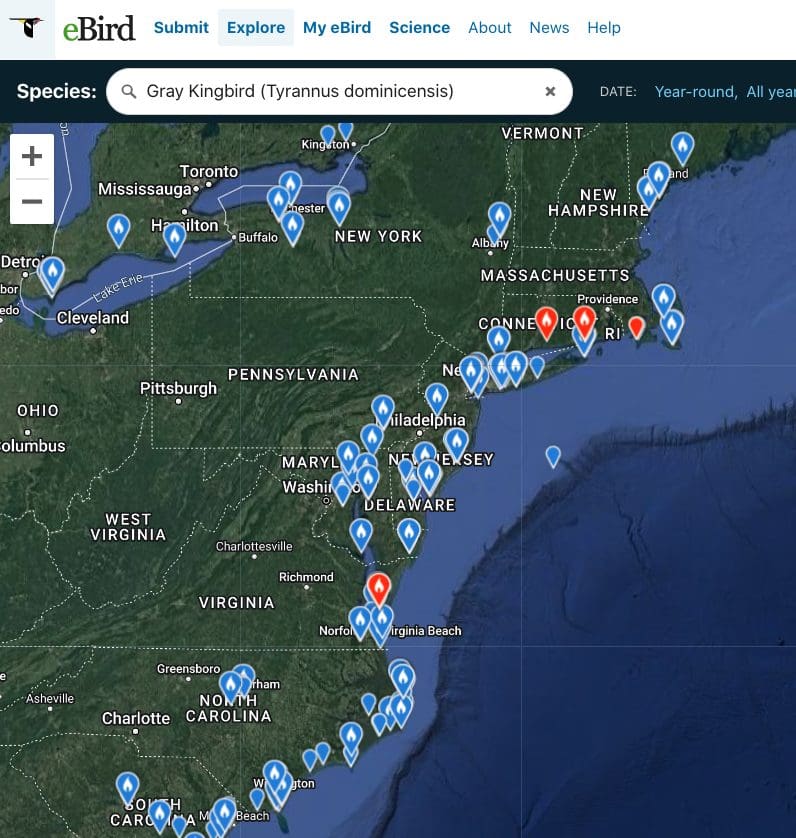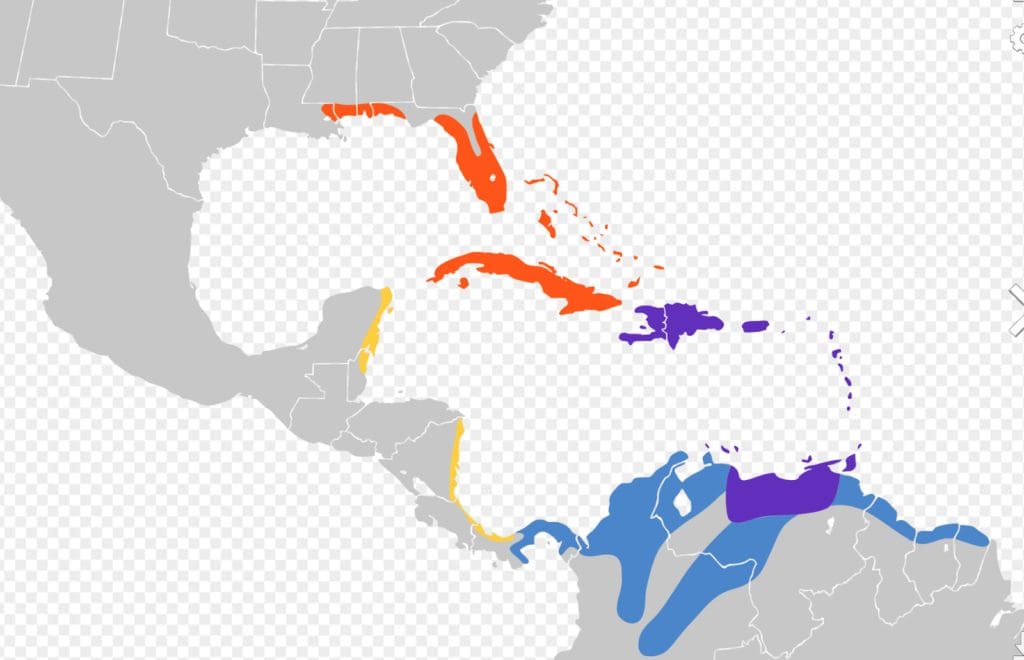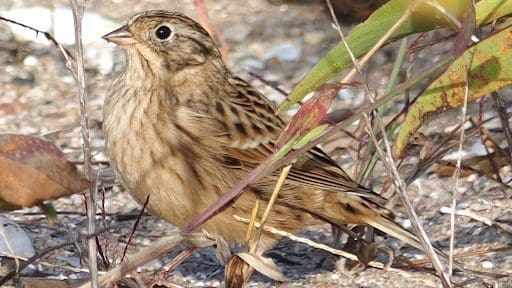Smith’s Longspur
Honorable Mention: Gray Kingbird
State Year List for Connecticut 2022
By the end of the month of October 2022, Connecticut had recorded 329 species on eBird. Five new species were added during October (see the image below, which is an eBird SYL list sorted by date), and Smith’s Longspur was the 327th species added, reported to eBird on October 18 by Bill Rankin. Our team chose Smith’s Longspur as the #1 Bird of the Month (BOTM) for October, with an Honorable Mention second place to the Gray Kingbird. Comparative maps for both species are shown in the reference section below.
Bill Rankin initially found and reported the Smith’s Longspur at Sandy Point, New Haven, CT. Here is his eBird report (https://ebird.org/checklist/S120893420 ) and photos:
ARCC Update
ARCC records show that this is the first autumn record for Smith’s Longspurs in Connecticut.
Connecticut has had five reports of SMLO, a few of which are pending ARCC approval.
eBird Maps for Smith’s Longspur and Gray Kingbird
The eBird maps use blue and red pins/icons to display the locations of birds reported. The red pins indicate reports in the most recent thirty days, and after that time, the red pins change color to become blue pins. The red pin(s) in the several eBird maps below show the Smith’s Longspur reported in Connecticut during the 30 day period October 1 through October 31, 2022.
These eBird maps were captured on November 10, 2022 at 3 pm.
The eBird map at right shows Gray Kingbird reports during October (central CT) and early November (the two red icons to the right side).
Note that there was only one Smith’s Longspur in the Northeast during October 2022. There were three Gray Kingbirds in the Northeast during October and the first days of November.

References
Wikipedia: Smith’s Longspur
https://en.wikipedia.org/wiki/Smith%27s_longspur
Wikipedia: Gray Kingbird (Honorable Mention species)
https://en.wikipedia.org/wiki/Gray_kingbird

eBird article on Smith’s Longspur: https://ebird.org/species/smilon
Audubon Guide to North American Birds: https://www.audubon.org/field-guide/bird/smiths-longspur
Birds Of The World link, regarding diet of Smith’s Longspur: https://birdsoftheworld.org/bow/species/smilon/cur/introduction
Including this about their diet:
Diet and Foraging
Feeding
Main Foods Taken
Winter: mainly weed and grass seeds, also ground invertebrates. Summer: switch from a predominantly seed diet to an invertebrate diet as summer progresses.
Microhabitat For Foraging
Winter and summer, exclusively on the ground.
Food Capture And Consumption
Walks on the ground searching for seeds and invertebrates. Husks seeds with bill and tongue. Does not scratch the surface with feet but occasionally digs through moss clumps, lichen mats, and soil with bill to capture ants or beetles (JVB). Feeds in groups during winter and migration, solitary or with mate in summer.
Diet
Major Food Items
In winter mainly seeds of grasses, waste grain, and weeds, including: Aristida sp., Sporobolus sp., Silaria sp., Panicum sp., wheat, timothy, clover, crabgrass, ragweed, bulrush, millet and sedge. Ground beetles, caterpillars, and spiders main invertebrates eaten (Martin et al. in Kemsies 1968). On migration, cracked corn and seeds of Sporobolus vaginiflorous, and Digitaria ischaemum (Kemsies and Randle 1964). In summer, switch from mostly seed diet upon arrival on breeding grounds to mostly invertebrates by the time chicks hatch (Jehl 1968c). Nestling diet mostly caterpillars, grasshoppers, emergent odonates, adult diptera (tipulids, chironomids and culicids), and adult lepidoptera (Jehl 1968c, JVB).
Quantitative Analysis
Jehl (Jehl 1968c) analysed stomachs of 39 adults collected over the breeding season. Seeds 90% of diet by volume Jun 1-10, with invertebrates (ants, spiders and beetles, larval lepidoptera) the remainder. By 20 Jun, diet > 85% invertebrates (largely terrestrial forms or immature stages of flying insects). Snails found in 5 of 14 birds collected in mid-Jul after many of the tundra pools had dried. Few differences between adult and chick diets except chicks fed more spiders; (these results may be biased as all chicks examined died from exposure; Jehl 1968c). Leaves also found in some chicks, but may be accidental. Grit found in most of the older chicks. Jehl (Jehl 1968c) and Grinnell (Grinnell 1944) list all the families of insects observed in stomachs. “
Crossley ID Guides online: https://crossleybooks.com/species/smiths-longspur/
Credits/Co-authors
This report is a product of the COA Seasonality Project, a team consisting of A. Dasinger, C. Ehlinger, R. Gedney, D. Jernigan, C. Repasz, and co-chaired by M. Bull and T. Robben (https://www.ctbirding.org/about/coa-board-of-directors/ ). It is advised by C.Wood and ARCC: specifically by F. Mantlik, F. Gallo, P. Rusch, G. Hanisek (https://www.ctbirding.org/arcc/committee-members/ ).

